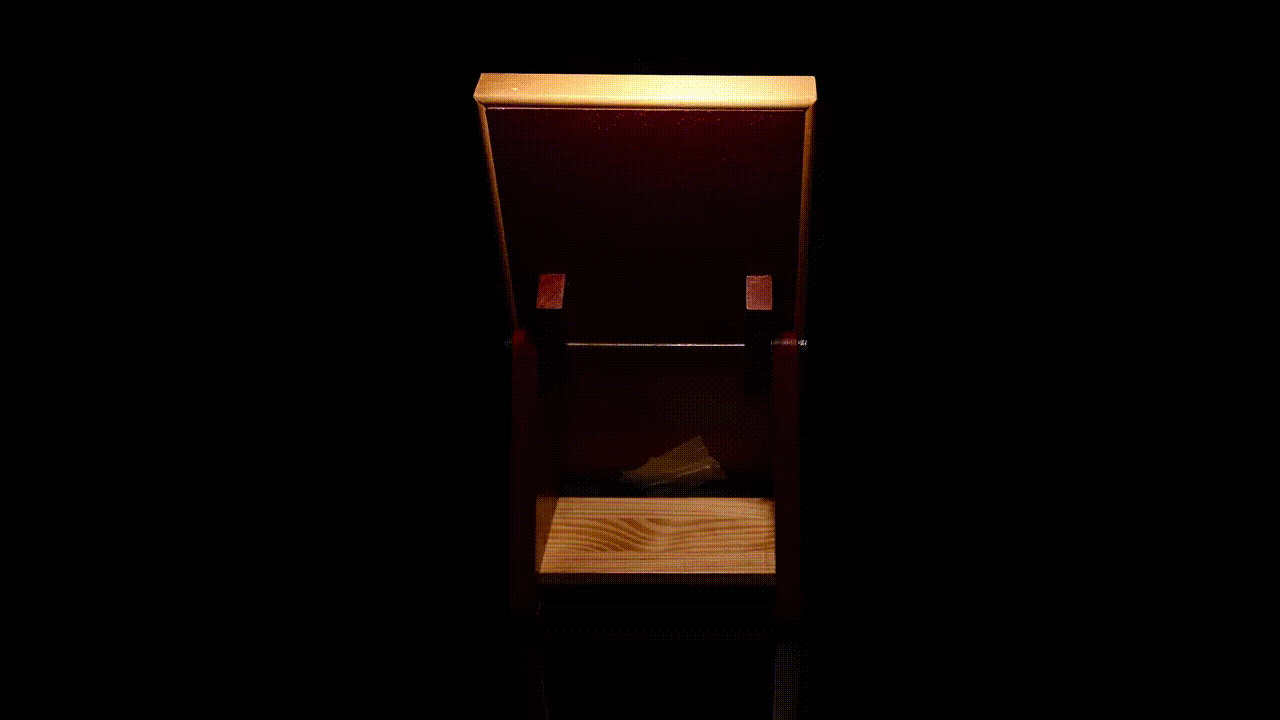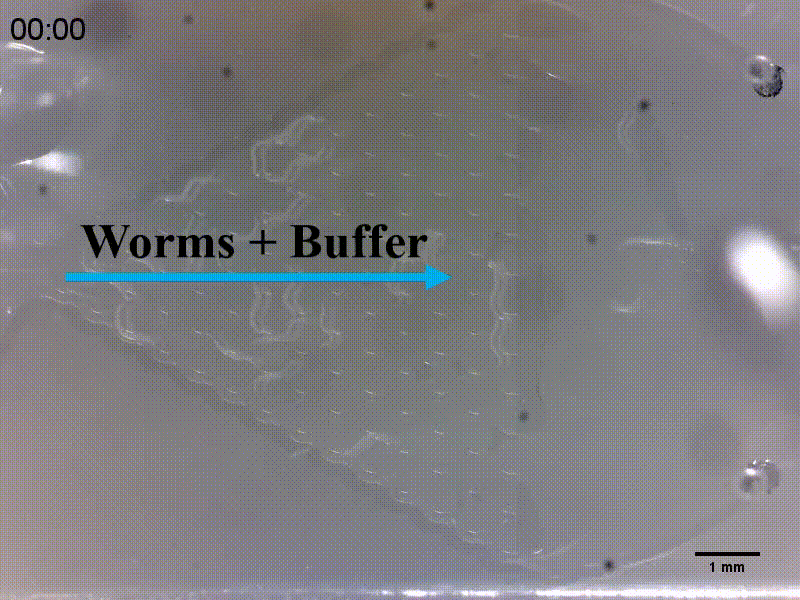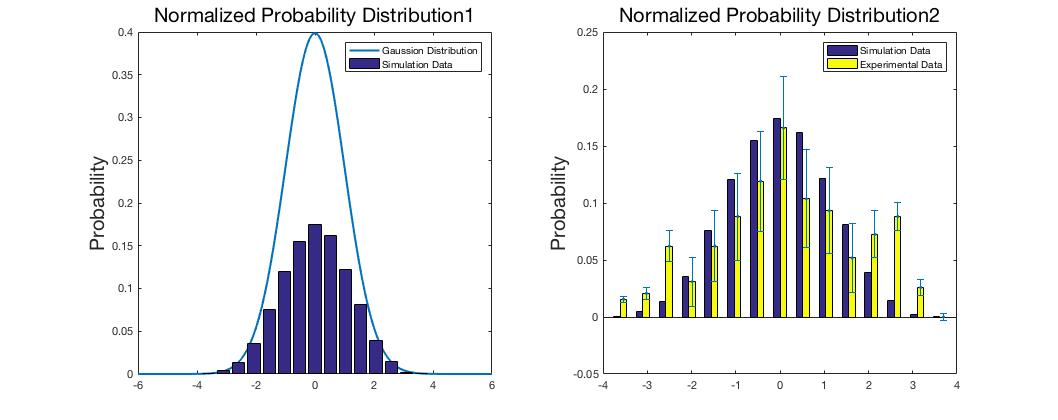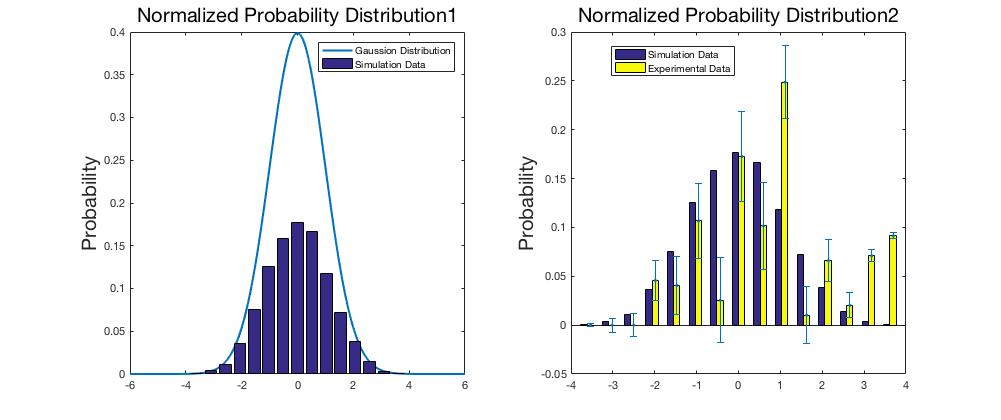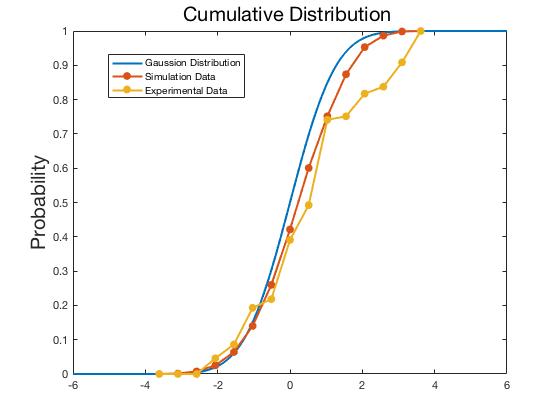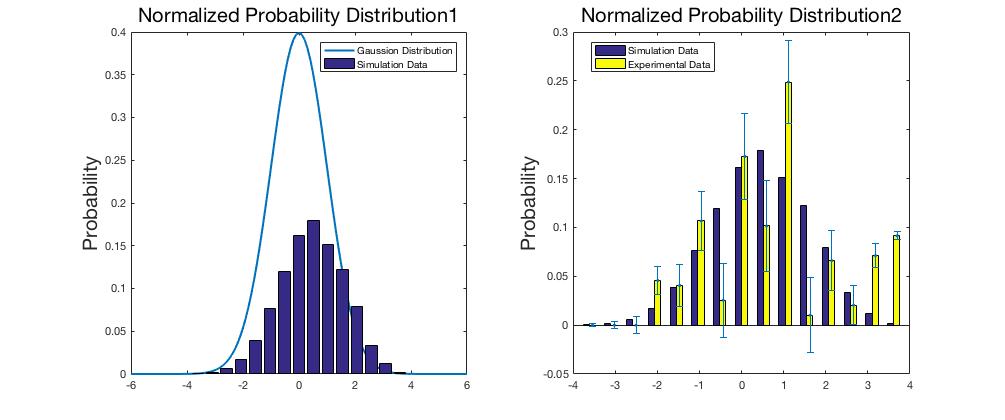| Line 9: | Line 9: | ||
| − | This model describes how microfluidics Gaussian distribution plate works when we use this device to test <i>C.elegans’(Caenorhabditis elegans)</i> preference in the plate.If the plate works, the model can further describe how much preference the <i>C.elegans’</i> show when attraction or repellent factor is added. | + | This model describes how microfluidics Gaussian distribution plate works when we use this device to test <i>C. elegans’(Caenorhabditis elegans)</i> preference in the plate.If the plate works, the model can further describe how much preference the <i>C. elegans’</i> show when attraction or repellent factor is added. |
Different from classical Galton board(Fig.1), it is worms rather than balls running on the plate. We use worms as the “ball”. However, when a worm is choosing a direction at the crossing, its previous choice may influence current choice due to worm’s relative long body. | Different from classical Galton board(Fig.1), it is worms rather than balls running on the plate. We use worms as the “ball”. However, when a worm is choosing a direction at the crossing, its previous choice may influence current choice due to worm’s relative long body. | ||
| Line 17: | Line 17: | ||
==Details:== | ==Details:== | ||
| − | Gaussian distribution is very common in nature and important in statistics. This distribution is tied to many natural phenomena. In our experiment, we use Gaussian | + | Gaussian distribution is very common in nature and important in statistics. This distribution is tied to many natural phenomena. In our experiment, we use <i>the Gaussian Plate</i> to see <i>C. elegans’</i>’ distribution. Then we use it to see the change of <i>C. elegans’</i>’ distribution after adding attraction or repellent factor (Fig.2). |
| − | {{SUSTech_Image_Center_fill-width | filename=T--SUSTech_Shenzhen--Microfluidics--fig5.png |width=1000px| caption=<B>Fig. 2 The Gaussian distribution A) </B> The ideal Gaussian distribution before adding chemicals. <B> B) </B>The changed Gaussian distribution after adding chemicals by using the first diffusion methods, which means diacetyl diffuse in the same plate as the Gaussian | + | {{SUSTech_Image_Center_fill-width | filename=T--SUSTech_Shenzhen--Microfluidics--fig5.png |width=1000px| caption=<B>Fig. 2 The Gaussian distribution A) </B> The ideal Gaussian distribution before adding chemicals. <B> B) </B>The changed Gaussian distribution after adding chemicals by using the first diffusion methods, which means diacetyl diffuse in the same plate as <i>the Gaussian Plate</i> .}} |
Firstly, we introduced a parameter ‘k<sub>a</sub>’ (0<=k<sub>a</sub><=1) to describe how much the previous choice influences the current choice | Firstly, we introduced a parameter ‘k<sub>a</sub>’ (0<=k<sub>a</sub><=1) to describe how much the previous choice influences the current choice | ||
| Line 29: | Line 29: | ||
It means the greater the ‘k<sub>a</sub>’ is the greater the influence of previous choice is. Especially, when ‘k<sub>a</sub>’ is zero, the simulation model is more like Gaussian distribution. | It means the greater the ‘k<sub>a</sub>’ is the greater the influence of previous choice is. Especially, when ‘k<sub>a</sub>’ is zero, the simulation model is more like Gaussian distribution. | ||
| − | We counted the number of <i>C.elegans</i> in each channel and calculated the parameter ‘k<sub>a</sub>’ at first (Fig.4). | + | We counted the number of <i>C. elegans</i> in each channel and calculated the parameter ‘k<sub>a</sub>’ at first (Fig.4). |
| − | {{SUSTech_Image_Center_8 | filename=T--SUSTech_Shenzhen--3.gif | caption=<B>Fig. 4 Gaussian | + | {{SUSTech_Image_Center_8 | filename=T--SUSTech_Shenzhen--3.gif | caption=<B>Fig. 4 <i>the Gaussian Plate</i> to study locomotion on-chip</B>}} |
{|class="table table-striped" | {|class="table table-striped" | ||
| Line 50: | Line 50: | ||
{{SUSTech_Shenzhen/bmath|equ=<nowiki> k=\frac{same turning-different turning}{total turning}=\frac{(20+10-12-9)}{(20+10+12+9)}=0.18</nowiki>}} | {{SUSTech_Shenzhen/bmath|equ=<nowiki> k=\frac{same turning-different turning}{total turning}=\frac{(20+10-12-9)}{(20+10+12+9)}=0.18</nowiki>}} | ||
| − | Assume that ‘k<sub>a</sub>’ doesn’t change when we add attraction or repellent factors. Then this model can be used to stimulate <i>C.elegans</i> preference considering ‘k<sub>a</sub>’. | + | Assume that ‘k<sub>a</sub>’ doesn’t change when we add attraction or repellent factors. Then this model can be used to stimulate <i>C. elegans</i> preference considering ‘k<sub>a</sub>’. |
| − | We can analyze how much the factor attracts or repels the <i>C.elegans</i> by introducing another parameter ‘k<sub>perf</sub>’ (0<=k<sub>perf</sub><=1). | + | We can analyze how much the factor attracts or repels the <i>C. elegans</i> by introducing another parameter ‘k<sub>perf</sub>’ (0<=k<sub>perf</sub><=1). |
| − | Both parameters set above are dependent on the assumption that parameters values are proportional to the probability they affect the <i>C.elegans</i>’ choice. | + | Both parameters set above are dependent on the assumption that parameters values are proportional to the probability they affect the <i>C. elegans</i>’ choice. |
| − | For example, if ‘k<sub>a</sub>’ is to ‘0’, previous choice doesn’t affect current choice at all. If ‘’k<sub>a</sub> is ‘1’, the worm’s next choice is totally determined by the previous choice and the final result will show polarized distribution( <i>C.elegans</i> only pass through the rightmost or leftmost channels). When ‘k<sub>a</sub>’ is 0.5, a worm has 25% probability of turning right/left and 75% probability of turning left/right at a crossing. ‘k<sub>b</sub>’ (attraction or repellent parameter) is the same as ‘k<sub>a</sub>’ | + | For example, if ‘k<sub>a</sub>’ is to ‘0’, previous choice doesn’t affect current choice at all. If ‘’k<sub>a</sub> is ‘1’, the worm’s next choice is totally determined by the previous choice and the final result will show polarized distribution( <i>C. elegans</i> only pass through the rightmost or leftmost channels). When ‘k<sub>a</sub>’ is 0.5, a worm has 25% probability of turning right/left and 75% probability of turning left/right at a crossing. ‘k<sub>b</sub>’ (attraction or repellent parameter) is the same as ‘k<sub>a</sub>’ |
==Result:== | ==Result:== | ||
| Line 71: | Line 71: | ||
b.Compare Preference stimulated data preference with experimental data after adding diacetyl | b.Compare Preference stimulated data preference with experimental data after adding diacetyl | ||
| − | ’k<sub>a</sub>’ is 0.18 determined previously. However, stimulated data is not fit the experimental well. Because there are some bubbles in the Gaussian | + | ’k<sub>a</sub>’ is 0.18 determined previously. However, stimulated data is not fit the experimental well. Because there are some bubbles in <i>the Gaussian Plate</i> . These bubbles block the crossings and affect the <i>C. elegans</i>’ choice. |
| − | There till some evidence shows the <i>C.elegans</i>’ preference by comparing experimental data to stimulation data with different ‘k<sub>perf</sub>’. | + | There till some evidence shows the <i>C. elegans</i>’ preference by comparing experimental data to stimulation data with different ‘k<sub>perf</sub>’. |
--------------- | --------------- | ||
Revision as of 21:48, 1 November 2017
Worms Locmotion
Model
Contents
This model describes how microfluidics Gaussian distribution plate works when we use this device to test C. elegans’(Caenorhabditis elegans) preference in the plate.If the plate works, the model can further describe how much preference the C. elegans’ show when attraction or repellent factor is added.
Different from classical Galton board(Fig.1), it is worms rather than balls running on the plate. We use worms as the “ball”. However, when a worm is choosing a direction at the crossing, its previous choice may influence current choice due to worm’s relative long body.
Details:
Gaussian distribution is very common in nature and important in statistics. This distribution is tied to many natural phenomena. In our experiment, we use the Gaussian Plate to see C. elegans’’ distribution. Then we use it to see the change of C. elegans’’ distribution after adding attraction or repellent factor (Fig.2).
Firstly, we introduced a parameter ‘ka’ (0<=ka<=1) to describe how much the previous choice influences the current choice
The ‘ka’ is defined as the absolute value of the difference between the probability of two direction choices.
It means the greater the ‘ka’ is the greater the influence of previous choice is. Especially, when ‘ka’ is zero, the simulation model is more like Gaussian distribution.
We counted the number of C. elegans in each channel and calculated the parameter ‘ka’ at first (Fig.4).
| Count | Firstly Turn Left | Firstly Turn Right |
| Secondly Turn Left | 20 | 9 |
| Secondly Turn Right | 12 | 10 |
k=\frac{same turning-different turning}{total turning}=\frac{(20+10-12-9)}{(20+10+12+9)}=0.18
Assume that ‘ka’ doesn’t change when we add attraction or repellent factors. Then this model can be used to stimulate C. elegans preference considering ‘ka’.
We can analyze how much the factor attracts or repels the C. elegans by introducing another parameter ‘kperf’ (0<=kperf<=1).
Both parameters set above are dependent on the assumption that parameters values are proportional to the probability they affect the C. elegans’ choice.
For example, if ‘ka’ is to ‘0’, previous choice doesn’t affect current choice at all. If ‘’ka is ‘1’, the worm’s next choice is totally determined by the previous choice and the final result will show polarized distribution( C. elegans only pass through the rightmost or leftmost channels). When ‘ka’ is 0.5, a worm has 25% probability of turning right/left and 75% probability of turning left/right at a crossing. ‘kb’ (attraction or repellent parameter) is the same as ‘ka’
Result:
Simulation results are shown in two steps:
1.Determining ‘ka’: To determine ‘ka’, we did a experiment without adding factors‘ka’ equates to 0.18, according to the table shown above.
2. a. Compare Stimulated 100000 worms with experimental data.
b.Compare Preference stimulated data preference with experimental data after adding diacetyl
’ka’ is 0.18 determined previously. However, stimulated data is not fit the experimental well. Because there are some bubbles in the Gaussian Plate . These bubbles block the crossings and affect the C. elegans’ choice.
There till some evidence shows the C. elegans’ preference by comparing experimental data to stimulation data with different ‘kperf’.
‘kperf’ equals to 0:
‘kperf’ equals to 0.1:
‘kperf’ equals to 0.2:
Conclusion
The result shows that ‘kperf’ is between 0.1 and 0.2. If bubbles don’t block crossings in plate, the stimulation data will fit experimental data better.

